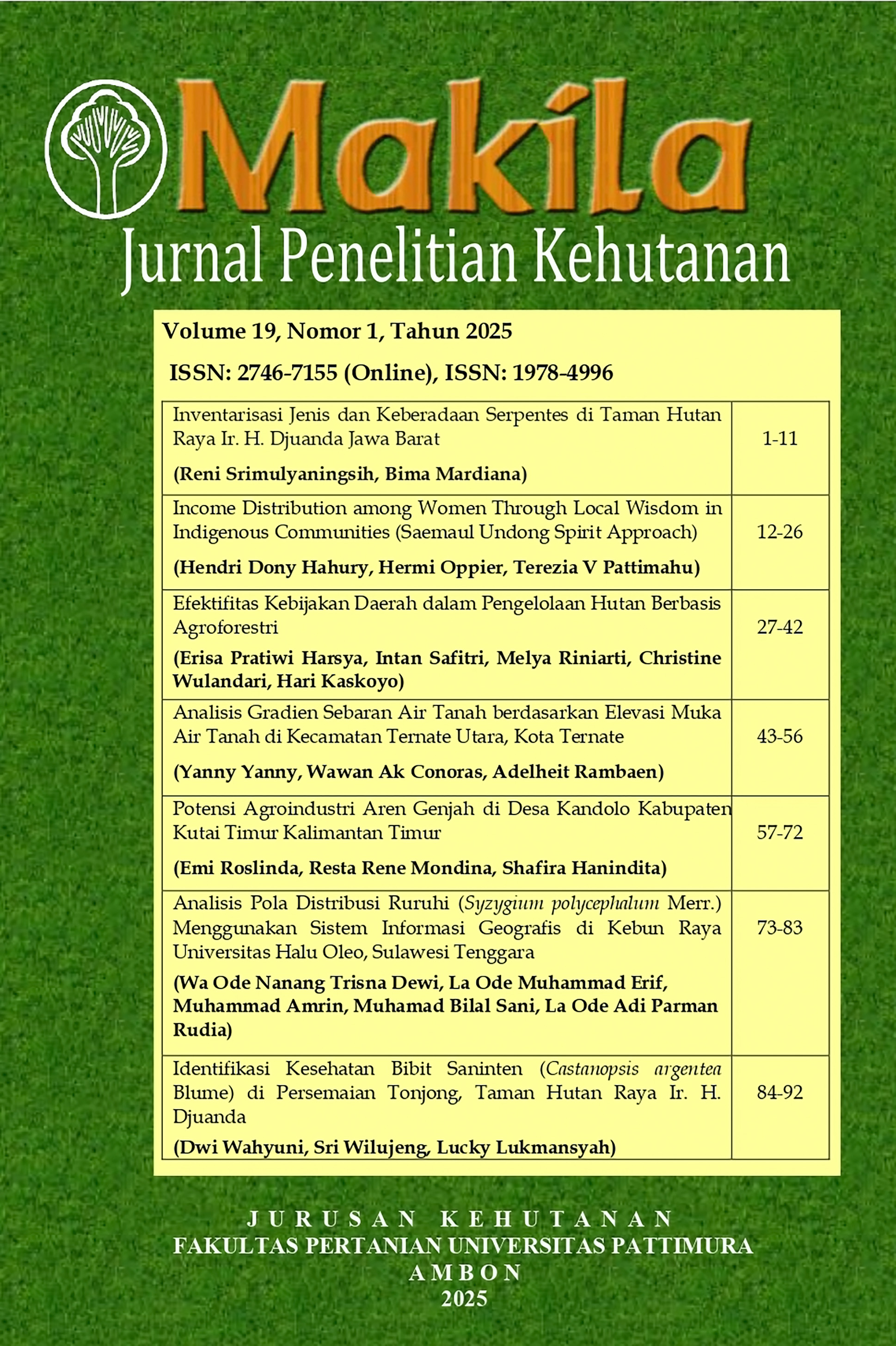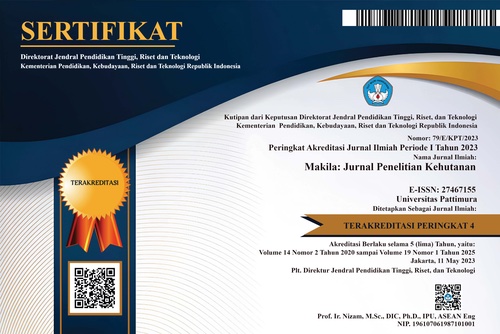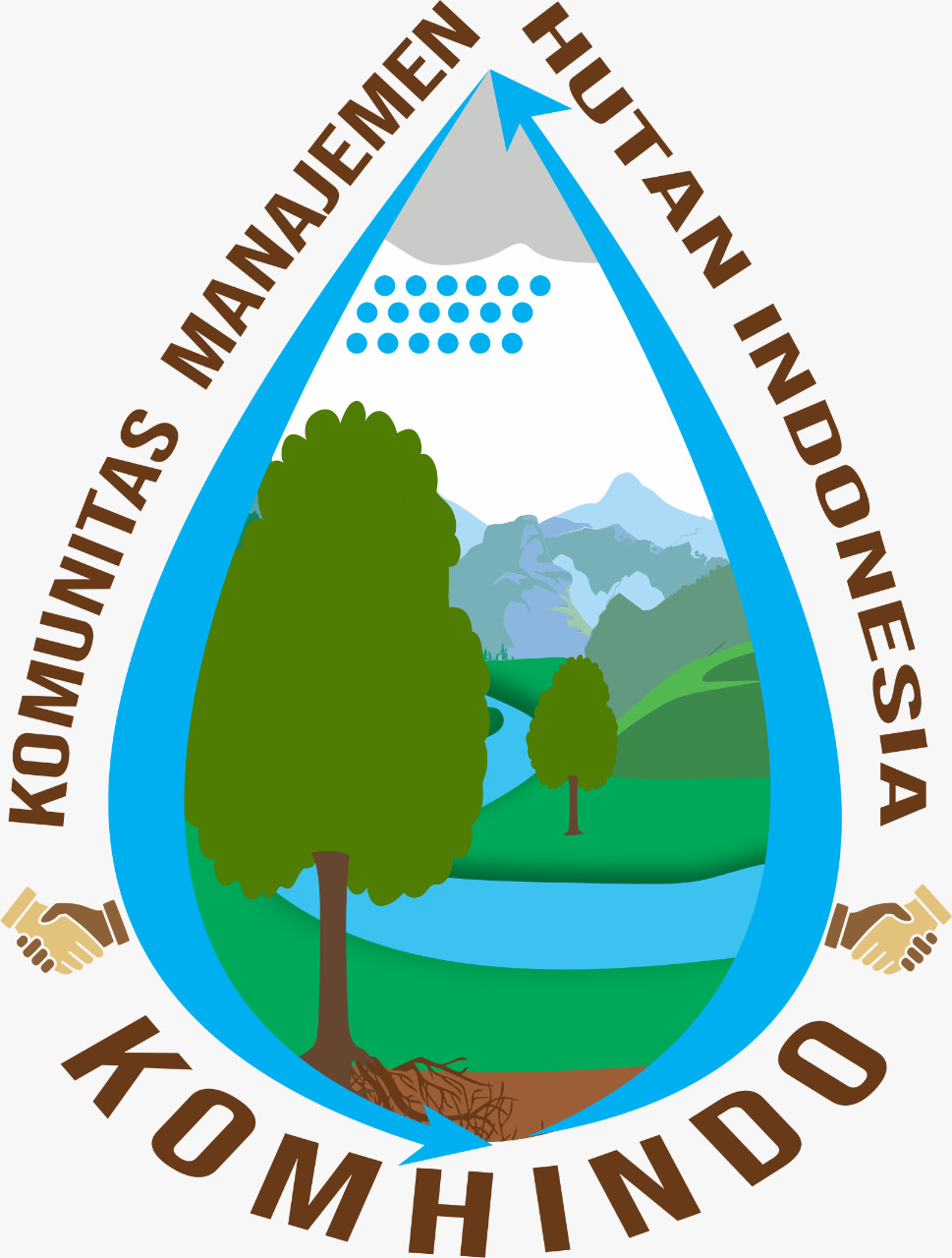Analisis Vegetasi Hutan pada Zona Pemanfaatan di Pulau Nusalaut
Abstract
Small islands possess considerable ecological and economic potential, particularly in the management of forest resources. However, unsustainable forest management practices frequently undermine the integrity and resilience of these ecosystems. Implementing zoning strategies, specifically through the establishment of utilization zones, presents a viable solution for promoting the sustainable use of forest resources. This study analyzes the vegetation structure within the utilization zone of Nusalaut Island, which is located at elevations ranging from 0 to 100 meters above sea level and is characterized by intensive activities such as forest resource exploitation and plantation development. The primary objectives of this research are to assess the Importance Value Index (IVI) and evaluate species diversity across different vegetation strata within the utilization zone. A combined transect and grid sampling method was employed, and data analysis utilized standard vegetation assessment techniques to calculate IVI and species diversity indices. The results reveal that the forest vegetation in the Nusalaut utilization zone comprises four growth stages: seedlings, saplings, poles, and mature trees, with species composition varying across strata and villages. The highest species richness was observed in the seedling stage (16 species in Ameth and Akoon), sapling stage (17 species in Abubu and Ameth), pole stage (18 species in Titawai), and tree stage (20 species in Akoon). The calculated IVI values varied significantly across growth stages, indicating a heterogeneous distribution of dominant species. Overall, species diversity within the utilization zone of Nusalaut Island is classified as moderate, reflecting a relatively balanced yet potentially vulnerable ecosystem that necessitates careful management to ensure the sustainability of its ecological functions.
Downloads
Copyright (c) 2025 Astrid Palapessy, Agustinus Kastanya, Irwanto Irwanto

This work is licensed under a Creative Commons Attribution 4.0 International License.











